Week 3 - CREAM SOUPS
- Chang Pinky
- Jan 23, 2023
- 6 min read
Updated: Jan 31, 2023
List the method of cookery and dishes to be covered in class
This week we are going to learn about making brown stock, chicken stock, and especially cream soup.
List your learning objectives for the class
Understand the difference between brown stock and chicken stock and their uses in cooking.
Learn how to properly prepare and roast bones and vegetables to create a rich and flavorful brown stock.
Practice safe food handling, kitchen sanitation, and knife skills while making stocks and soups.
Discuss your prior knowledge of the content
I have experience making chicken stock, which is a great start for learning about stocks in general, as it is one of the most commonly used types of stock in cooking. Brown stock, however, is a bit more complex and requires a different set of techniques and ingredients to achieve its rich, deep flavor. Cream soup making is also a different technique, which involves thickening and adding cream or milk to make a smooth and creamy soup.
Background Information
Research and discussion of method of cooking
To make brown stock, the traditional method involves slowly simmering roasted bones, vegetables, and aromatics such as thyme and bay leaves for several hours to extract all the flavors and nutrients. The ingredients should be browned first to develop a rich and complex flavor. To make chicken stock, the method is similar but with the use of chicken bones and meat. The ingredients are simmered for a shorter period of time, usually around 2-4 hours. For cream of tomato soup, the tomatoes are first blanched, peeled, and pureed. The pureed tomatoes are then simmered with butter, onions, and garlic and finished with cream or milk. To thicken the soup, flour or cornstarch can be added. The soup is then blended until smooth and seasoned with salt and pepper before serving.
Research and discussion of dishes
For historical dishes
According to World-FoodHistory.com, the history of cream of tomato soup dates back to the late 19th century, when it first appeared on the menus of American restaurants and hotels. At the time, canned tomatoes were becoming widely available, and chefs began experimenting with new ways to use them in their cooking. Cream of tomato soup was one of the first dishes to be made with canned tomatoes, and it quickly became a popular and widely-available item on restaurant menus. Campbell's Soup Company began selling condensed cream of tomato soup in the early 20th century, which made it even more widely available to home cooks. Since then, cream of tomato soup has been a staple in American cuisine and is considered a comfort food.
For cooking methods
According to FoodandWine.com, the cooking method for cream of tomato soup typically involves sautéing onions and garlic in butter until they are softened, then adding canned or fresh tomatoes, which have been pureed or crushed. The tomatoes are simmered with the onions and garlic, along with any additional seasonings such as thyme, basil, or bay leaves, to develop the flavor. After simmering for a period of time, usually 20-30 minutes, the soup is finished by adding cream or milk, and then pureed until smooth. Some variations of the recipe may call for the addition of flour or cornstarch to thicken the soup. Finally, the soup is seasoned with salt and pepper to taste before serving.
Dish/method variations
Cream of tomato soup is a versatile dish that can be made in a variety of ways to suit different tastes and dietary needs. Some variations include adding roasted tomatoes for a deeper, richer flavor, or spices such as cumin and chili powder for a spicy kick. Other variations include adding additional vegetables, such as carrots, celery, or bell peppers, to increase its nutritional value or pairing it with a grilled cheese sandwich.
Recipes

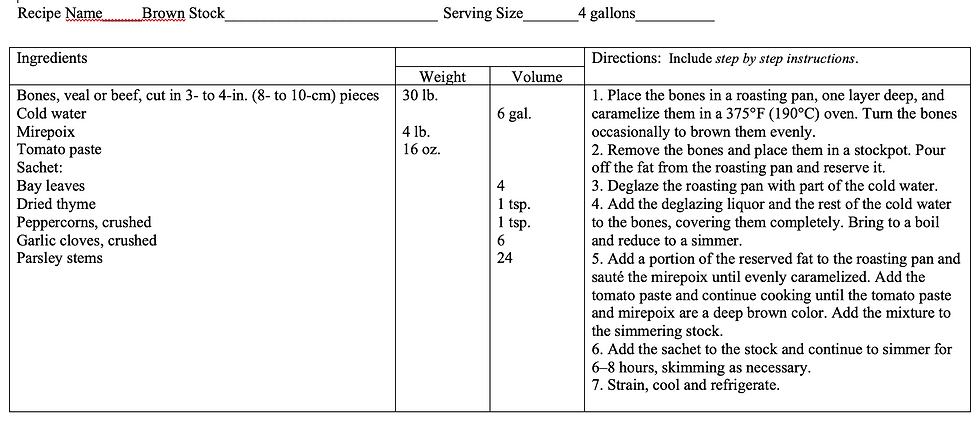
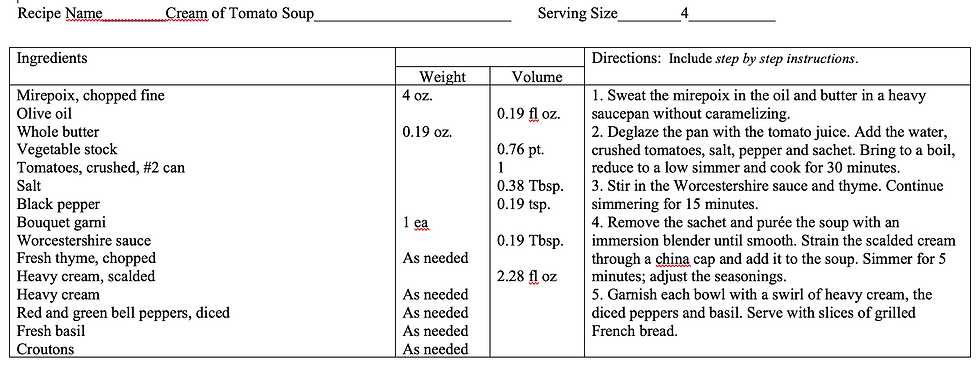
Plan of Work


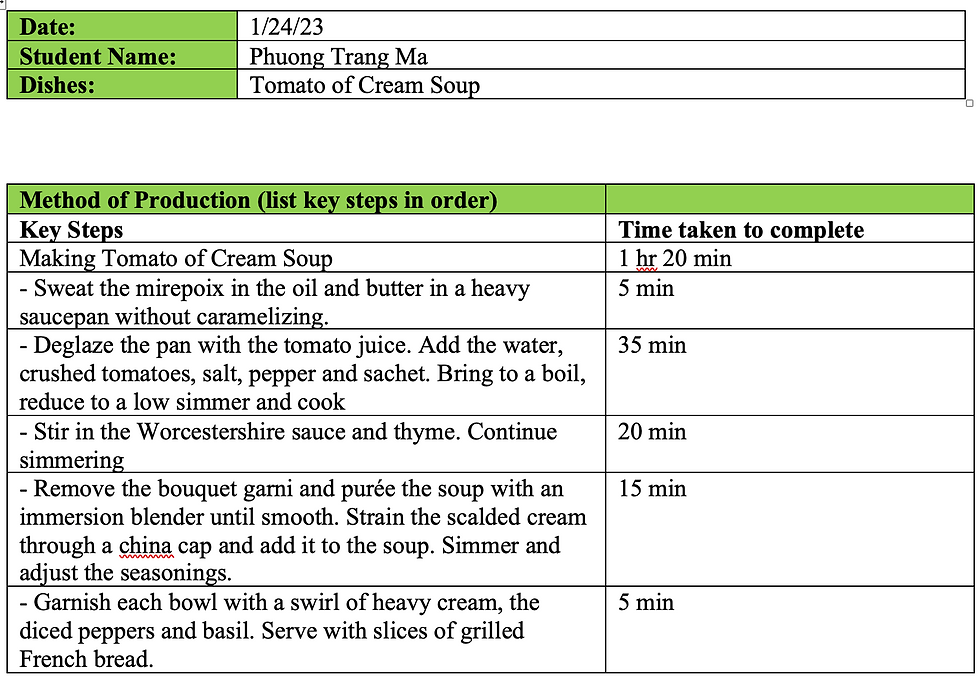
Result
Describe how well the technique/cooking method worked
We have seen a massive pot of brown and white stock which were made from beef and chicken bones. Even though we did not have a chance to make one by ourselves but it was valuable to see the result along with what was inside the pot.

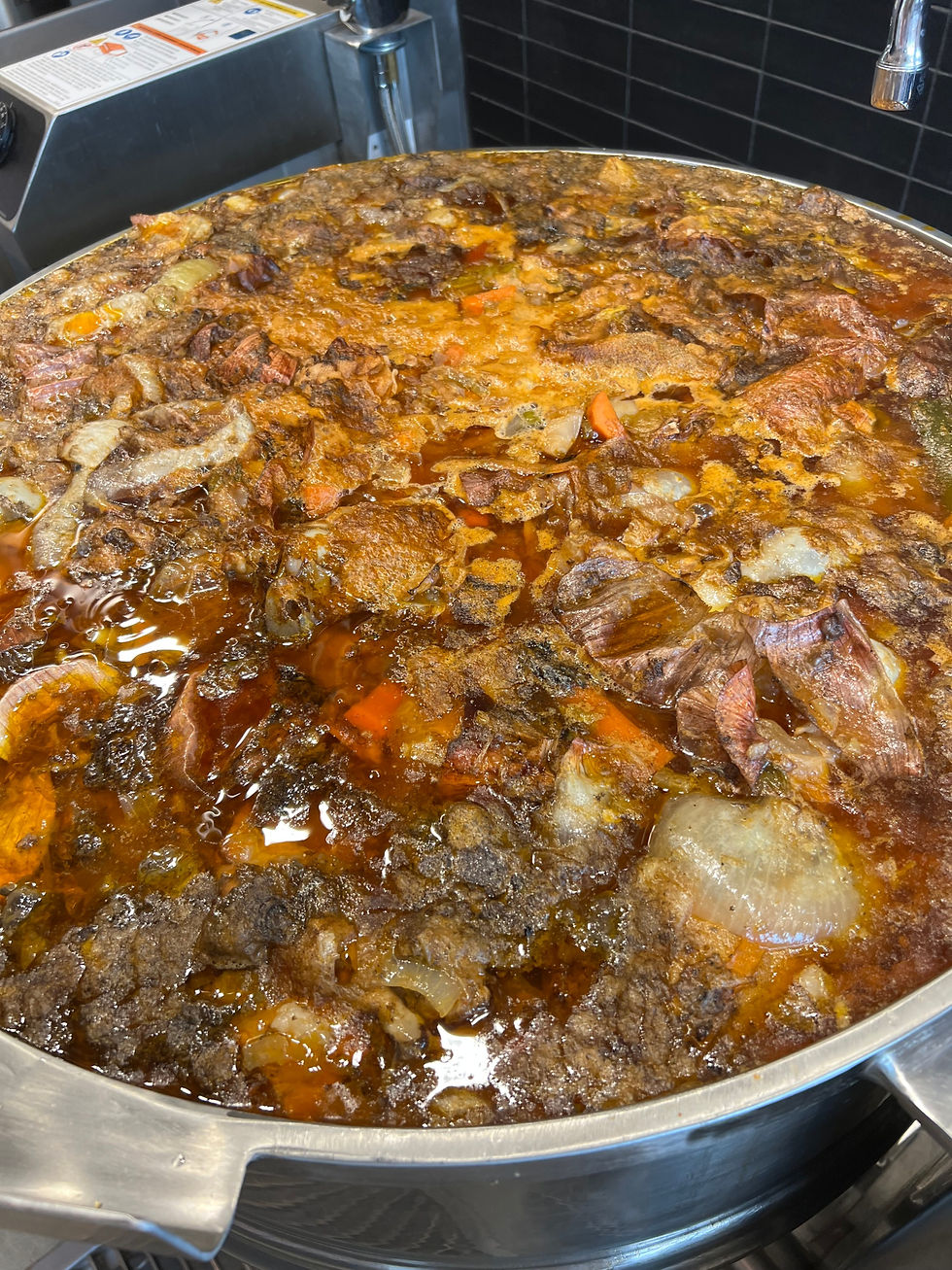
The process of making cream of tomato soup and croutons was a success. We prepared all the necessary ingredients with precise measurements for mise en place.
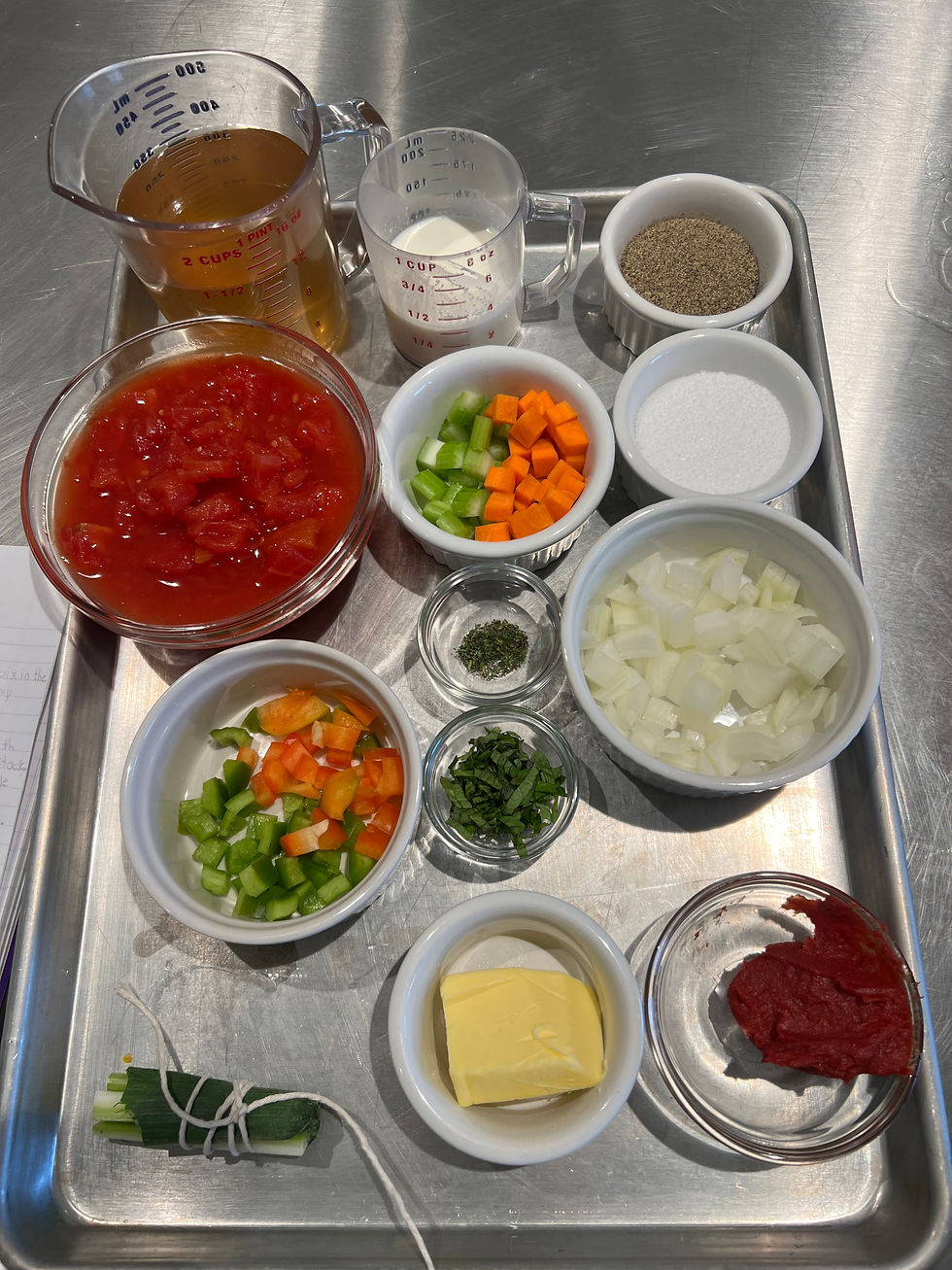
Next, we sweated the mirepoix by sautéing it. We added tomato paste, concassee and combined them, then poured in the vegetable stock and let it simmer. After 30 minutes, we balanced the flavor by adding Worcestershire sauce. Using a blender, we pureed the mixture to make it smooth and thick, then added more cream milk and Worcestershire sauce. Finally, we seasoned it with soy sauce, and garnished the soup with cream milk, basil, and bell peppers.
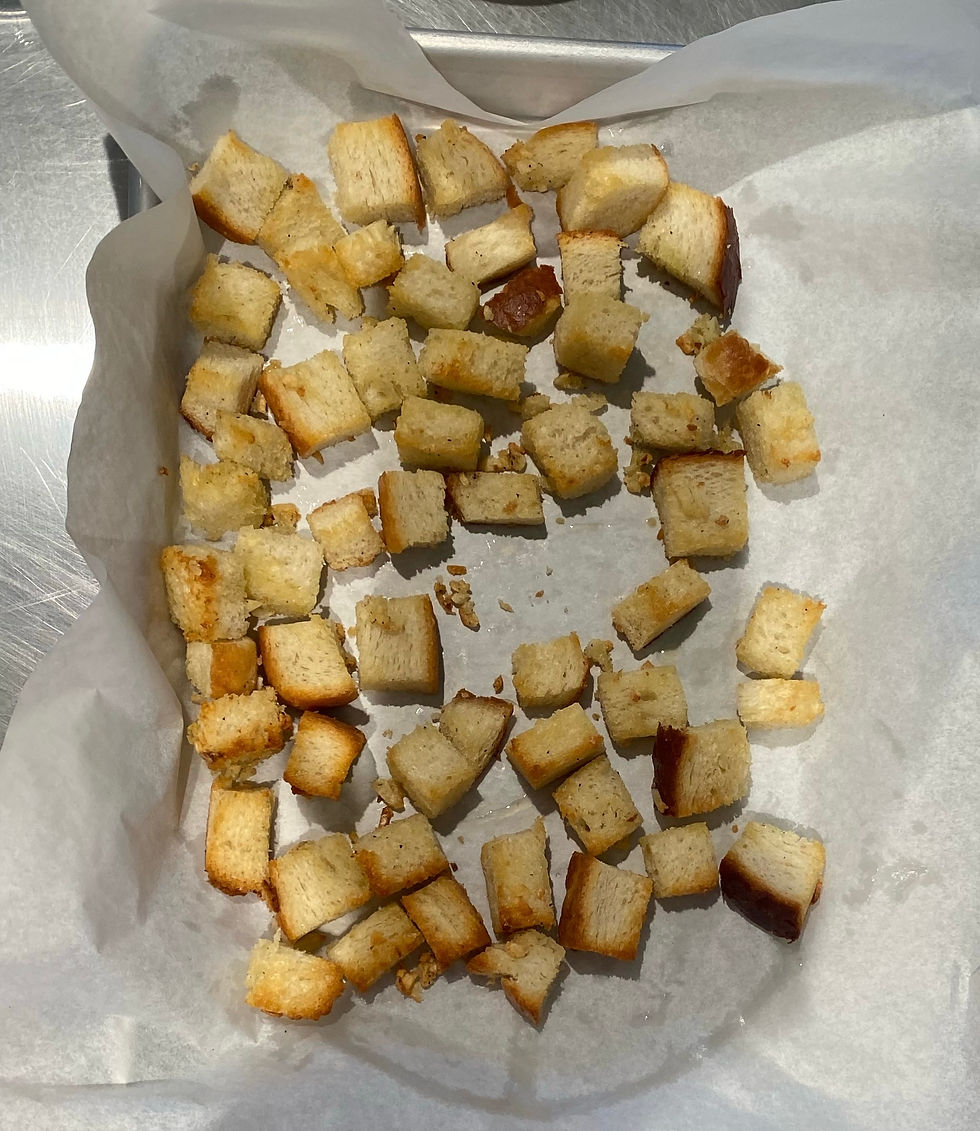
The croutons were also simple to make. We cut the bread into bite-sized pieces, mixed it with olive oil and garlic paste. It's crucial to check the croutons regularly while baking to ensure they are crisp, golden brown, but not burnt.
Describe the sensory results of the dish
Taste: The taste of cream of tomato soup was rich, smooth, and slightly sour with a tangy tomato flavor. The creaminess from the dairy and the sourness from the tomatoes make a satisfying and comforting soup. The croutons had a strong garlicky flavor, toasty, and slightly salty taste. The aroma was pungent and savory, with a hint of buttery and toasty notes.
Flavor: The main flavor of the dish was the tomato flavor which was extracted from the diced tomatoes and the tomato paste. It had a light, cool scent of tomatoes as well as the vegetables of mirepoix. I garnished some basil on top, which added a fresh and slightly peppery note to the soup, enhancing the overall flavor and aroma. Croutons were crispy, crunchy, and savory and their taste was enhanced by seasonings of garlic and herbs.

Texture: The structure of cream of tomato soup was smooth and velvety, with a creamy texture. The soup had a uniform consistency and a silky mouthfeel. The croutons were crunchy and toasty on the outside, with a soft and chewy texture on the inside. They had a dense and compact structure, which made them ideal for adding texture to the soup.
Appearance: The appearance of cream of tomato soup with garnishing basil, bell peppers, and croutons was vibrant and appetizing. The soup had a vibrant orange color, with a creamy and smooth texture. The basil was a fresh green color and added a pop of color to the soup. The diced bell peppers added a bright and colorful contrast to the soup, with their vibrant red and green hues. The croutons were golden-brown in color, adding a crunchy texture and toasty flavor to the soup. The combination of these ingredients creates a visually appealing dish.
Evaluation of results
Discuss the techniques that did work well
Fortunately, almost all the cooking methods we did this time worked well. Specifically, the mise en place was done with precise ingredient measurements, the mirepoix was sweated by sautéing, tomato paste and concassee were added and mixed with vegetable stock before being simmered. The flavor was balanced with Worcestershire sauce and the mixture was blended to achieve a smooth and thick texture, then seasoned with soy sauce and garnished with cream, basil, and bell peppers. The croutons were also made simply by cutting bread into bite-sized pieces, mixing with olive oil and garlic paste, then baking and regularly checking to ensure crispiness and avoiding burntness.
Discuss the techniques that did not work well
After finishing all the cooking steps, we realized the only technique we did not do well was measuring the amount of bread to make cheese toast and croutons. We made a bit too much for 2 servings so there was a waste of food.
Discuss the particular improvements and changes that could be implemented to improve the outcomes
To improve the outcome, we will implement better measurement techniques for ingredients would help to avoid waste and ensure accurate portion control. For example, when making cheese toast and croutons, we need to have a clearer understanding of the desired serving size that could help prevent overproduction and ensure all ingredients are used efficiently.
Conclusions
In conclusion, learning how to cook cream of tomato soup and croutons in class was a valuable experience that helped us to develop our cooking skills and knowledge of ingredients. By practicing and following the recipe, we were able to understand the techniques involved in creating a delicious and comforting soup, and the crispy croutons added a tasty crunch to the dish. This hands-on experience will undoubtedly serve as a useful foundation for future cooking endeavors.





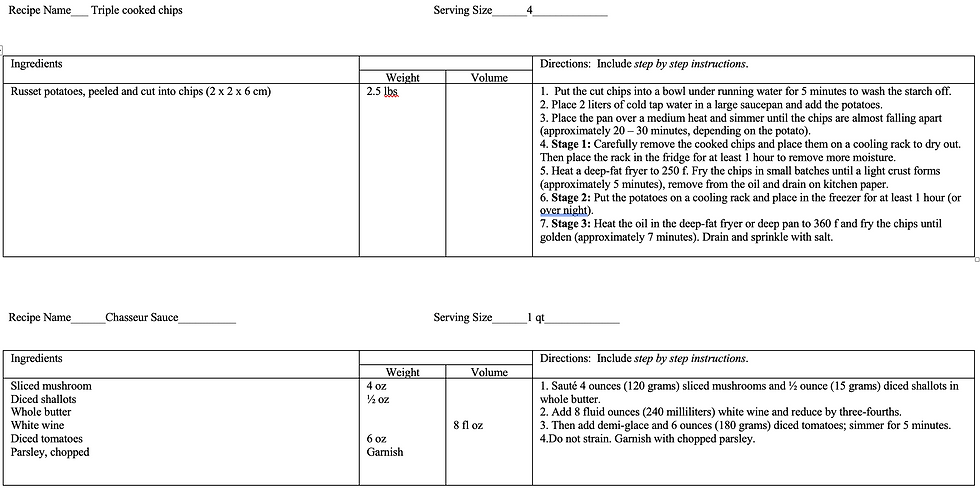
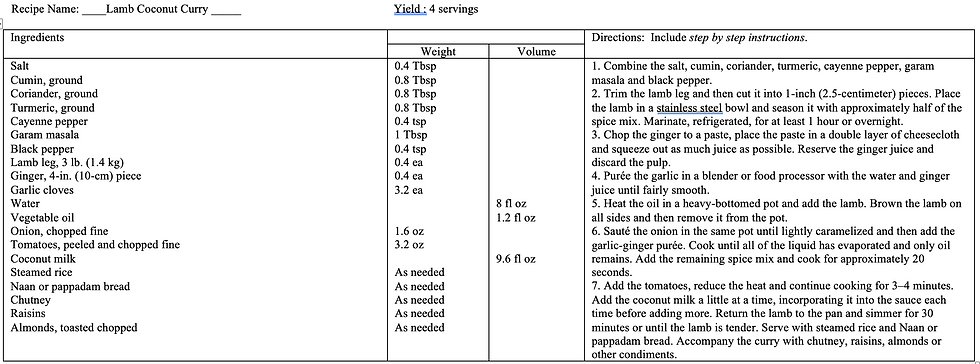

Comments